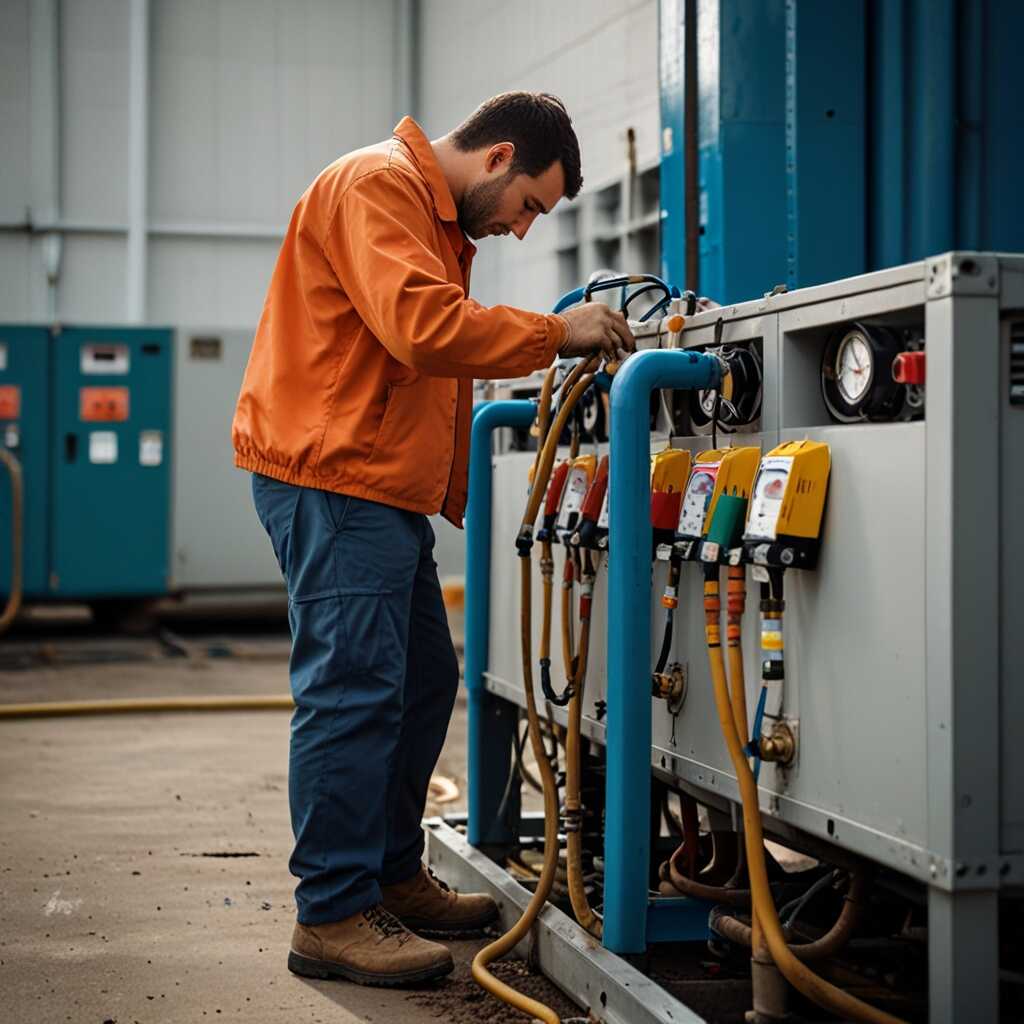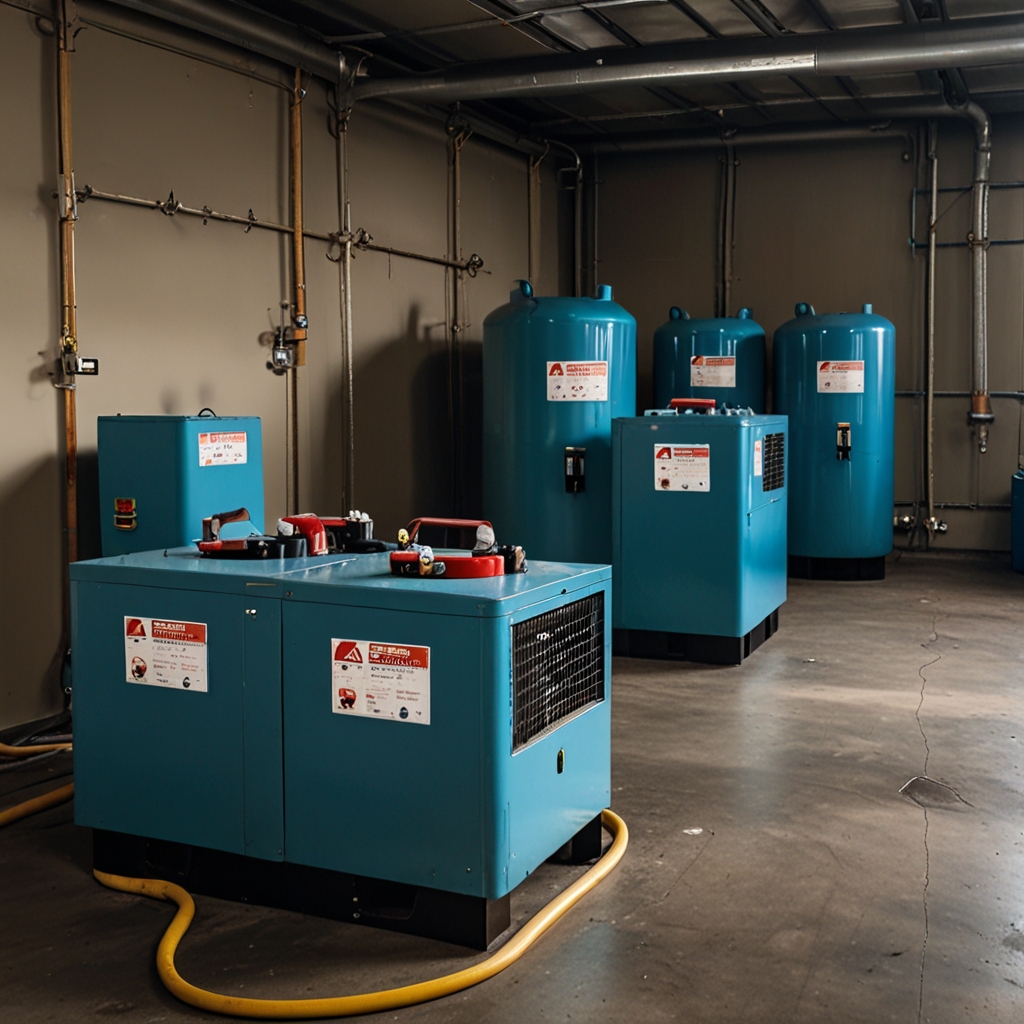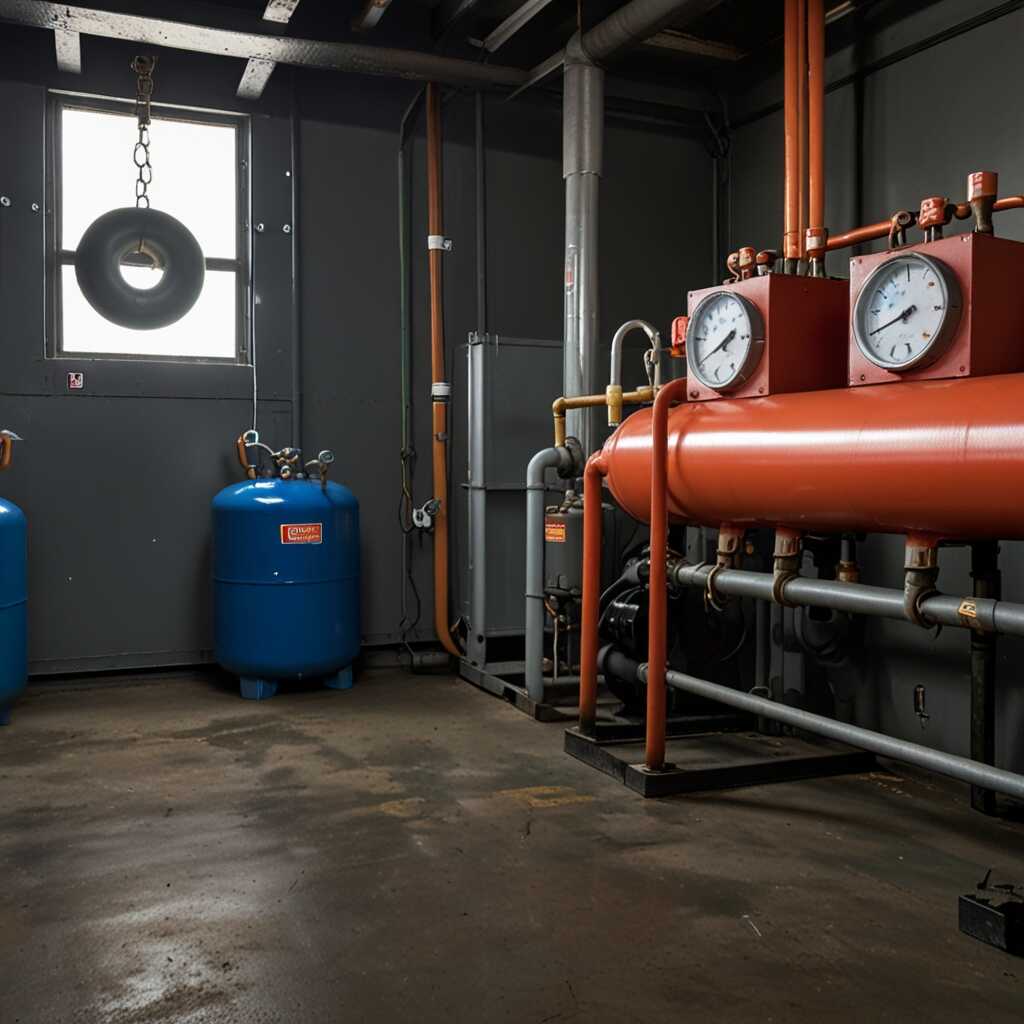The Benefits of Low Ambient Refrigerant Recovery Machines for HVAC Professionals are significant in improving efficiency and performance. These machines operate effectively in low ambient temperatures, offering reliability during challenging weather conditions. Refrigerant Recovery Pro provides expert guidance on selecting the right equipment, helping HVAC technicians maximize their refrigerant recovery efforts. Understanding the advantages of these specialized machines enhances operational success and ensures compliance with environmental regulations.
How Refrigerant Recovery Machines Operate in Cold Conditions
Refrigerant recovery machines are designed to operate efficiently in low ambient temperatures, ensuring reliable performance when outdoor conditions are subpar. They utilize specialized engineering features to enhance efficiency and maintain effective refrigerant recovery. Key components, such as compressors and cooling fans, are designed to handle reduced temperatures effectively. By employing thermal management technology, these machines can protect essential internal components from freezing, thereby ensuring reliable operation down to certain temperature limits, typically around 20°F (-6°C) depending on the unit’s specifications. This robustness is crucial for HVAC technicians working in colder climates, as it enables uninterrupted operations, delivering successful refrigerant recovery even in chilly weather.
Essential Engineering Features for Low Temperature Operation
Refrigerant recovery machines incorporate several essential engineering features to maintain performance in low ambient conditions. These units often include advanced thermal sensors that monitor internal temperatures and adjust functions dynamically. Dual-stage compressors are another vital feature, providing a reliable means to achieve high recovery rates while minimizing the impact of colder temperatures. Additionally, some models include insulated housings that help limit heat loss, improving energy efficiency overall. Research shows that models engineered with these features can yield recovery rates exceeding 90% even in temperatures well below freezing. This specialized design directly aids HVAC professionals by ensuring consistent performance and maximizing productivity on challenging job sites.
Distinct Benefits of Low Ambient Operation for Technicians
Low ambient refrigerant recovery machines deliver several key benefits for HVAC professionals. Their improved efficiency allows technicians to recover refrigerants quickly, even in chilly temperatures. These machines are designed for enhanced reliability, ensuring consistent performance under challenging weather conditions. Features such as sturdy construction and intuitive controls make them easy for technicians to operate. Low ambient machines can handle temperatures as low as 32°F, making them valuable for outdoor recovery projects during colder months.
Features Enhancing Performance Under Low Ambient Conditions
Low ambient refrigerant recovery machines boast several features that enhance their performance in cold temperatures. Many of these machines include advanced thermal management systems, which keep the unit operational even at low ambient temperatures. This ensures reliability and efficiency, reducing the risk of compressor failure. Additionally, high-quality components are often used to withstand extreme weather conditions, making the machines durable and sturdy. HVAC professionals benefit from these features, as they ensure smooth operation, helping to achieve faster and more effective refrigerant recovery.

Real-World Scenarios Utilizing Low Ambient Recovery Machines
Low ambient recovery machines are essential tools in various HVAC settings. They are commonly used in environments such as restaurants, supermarkets, and industrial facilities where temperature fluctuations are significant. These machines effectively handle refrigerants like R-410A and R-404A, enabling reliable recovery even in low temperatures. As temperatures drop below 50°F, low ambient recovery machines can maintain efficiency while ensuring compliance with recovery regulations.
Specific Applications of Low Ambient Recovery Machines in HVAC
Low ambient recovery machines deliver excellent performance in different HVAC applications. For instance, refrigeration units in supermarkets often face challenges when outdoor temperatures drop. Low ambient recovery machines can handle refrigerant recovery in these conditions without sacrificing efficiency. Similarly, in restaurants, where commercial refrigeration is vital, these machines ensure quick recovery and safe disposal of refrigerants, even during winter. Relying on low ambient recovery machines helps HVAC professionals maximize their recovery processes while addressing environmental concerns.
Key Numerical Insights on Refrigerant Recovery Equipment
- Over 20% of HVAC maintenance involves refrigerant recovery processes.
- Machines can recover refrigerants at temperatures as low as 25°F (-4°C).
- Low ambient machines can save up to 40% more refrigerant compared to standard units.
- They operate efficiently in temperatures ranging from -4°F to 70°F.
- Using these machines can reduce your refrigerant loss to less than 5% of the system’s total volume.
- Recovery rates improve by approximately 30% in low temperatures with specialized machines.
- Implementation can extend service life by an average of 5 years for recovery units.

Guidelines for Selecting the Best Refrigerant Recovery Machine
When selecting a refrigerant recovery machine, HVAC professionals should prioritize essential performance features. Look for units with high recovery efficiency, a durable design, and compliance with EPA standards. Reliable brands often provide extensive reviews and comparisons that highlight units capable of handling low ambient temperatures effectively. Many HVAC technicians report excellent performance from specific models known for their speed and efficiency in cooler settings. Checking the recovery rate, which often exceeds 10 pounds per hour for quality machines, can also enhance your service reliability and efficiency.
Top Features to Consider When Choosing Recovery Equipment
Focusing on top features can help HVAC professionals choose effective recovery machines. Key attributes to assess include the machine’s refrigerant type compatibility and its ability to recover different refrigerants, such as R-410A and R-134a. A sturdy construction enhances durability and ensures longevity, making it a wise investment. Additionally, user-friendly interfaces with clear displays can simplify the operation. Machines designed for low ambient operation usually have specialized components that ensure efficient recovery even in cold conditions. Buying from trusted brands that offer warranties and expert reviews can also lead to better long-term performance.

Ensuring Optimal Performance of Recovery Machines
To ensure optimal performance of refrigerant recovery machines, follow best maintenance practices. Regularly inspect and clean filters for maximum airflow. Ensure all connections are secure to avoid leaks. Calibration and regular testing of the machine help maintain efficiency. Recovery machines designed for low ambient temperatures provide reliability in challenging conditions. Checking refrigerant levels and monitoring performance helps identify any issues early. Proper use of the machine enhances its lifespan and performance. Operators should familiarize themselves with specific features that can improve recovery times and data accuracy.
Understanding Ambient Temperature Effects on Machines
Ambient temperature significantly affects the performance of refrigerant recovery machines. Machines designed for low ambient temperatures can consistently deliver reliable performance in extreme conditions. High-quality machines often include features that enhance efficiency when temperatures drop. Operators should understand how temperature variations impact recovery times and machine functionality. Proper testing in real-world conditions provides valuable data on efficiency and durability. The integration of proven technologies helps machines maintain optimal performance despite external temperature challenges. Long-term, this ensures compliance with standards while preserving the quality of refrigerant management.
Significant Advantages for HVAC Technicians
- Machines enhance efficiency in recovering refrigerants despite low temperatures.
- They operate consistently, minimizing downtime and service disruptions for HVAC professionals.
- Innovative designs help meet environmental regulations effectively.
- Low ambient recovery machines increase the safety of technicians by minimizing exposure risks.
- They enable servicing in areas previously deemed impractical due to temperature constraints.
- Technicians can complete jobs faster, leading to improved customer satisfaction.
- Long-term use of these machines contributes to sustainability by reducing emissions.

Environmental Regulations and Their Implications for Recovery Processes
The main environmental regulations affecting refrigerant recovery processes include the Clean Air Act and the recent EPA regulations. Compliance with these regulations is essential for HVAC professionals. Awareness of legal requirements helps ensure effective refrigerant management practices. Organizations like the EPA and state environmental agencies enforce these regulations to control refrigerant emissions. In addition, HVAC professionals should regularly review these compliance guidelines to stay updated. Starting in 2025, HVAC systems need to meet new refrigerant recovery standards, aligning with current best practices and ensuring environmental protection.
Understanding EPA Compliance Guidelines for Refrigerant Recovery
Understanding EPA compliance guidelines for refrigerant recovery is crucial for HVAC professionals. These guidelines specify procedures for safe refrigerant management to minimize environmental impact. HVAC technicians must use certified recovery equipment designed to handle refrigerants efficiently. Proper training ensures that equipment is operated while maintaining compliance with regulations. Additionally, regular reviews of the latest standards help professionals remain informed about necessary updates. Complying with these EPA guidelines not only protects the environment but also enhances operational reliability and performance for HVAC systems.
Addressing Common Issues in Refrigerant Recovery Operations
Technicians face several challenges when using refrigerant recovery machines in low ambient conditions. Common issues include reduced efficiency, potential freezing of refrigerants, and equipment malfunctions. Efficient troubleshooting requires knowledge of operational parameters and equipment specifications. The factors affecting refrigerant recovery efficiency in low temperatures include the type of recovery machine used, setup configuration, and environmental conditions. Low ambient temperatures are generally considered to be anything below 60 degrees Fahrenheit or 15 degrees Celsius.
Best Practices for Low Ambient Refrigerant Recovery
To enhance performance in low ambient conditions, HVAC technicians must adopt several best practices. Using a recovery machine designed for low temperatures is essential. Technicians should regularly check the machine’s refrigerant settings to optimize recovery performance. Insulating hoses and minimizing exposure to cold air helps prevent freezing. Setting proper operating pressures and utilizing recovery tanks that can handle low-temperature refrigerants ensures safe and effective operations. Review your equipment against industry standards to guarantee it is reliable and efficient in low ambient conditions.
Comparison of Key Brands and Their Use Cases
- Brand A offers robust features for precise refrigerant recovery but can be pricier.
- Brand B is renowned for portability, making it ideal for residential HVAC jobs.
- Brand C provides a lower-cost option but may lack efficiency in extreme cold.
- Brand D features excellent customer service, beneficial for businesses needing support.
- Commercial HVAC contractors prefer brands with high recovery rates in diverse environments.
- Residential technicians value lightweight models for easy transportation between jobs.
- Engineers tend to select machines that align with specific regulatory compliance needs.
Innovative Developments in Refrigerant Recovery Technology
The latest advancements in refrigerant recovery technology greatly enhance efficiency and environmental compliance for HVAC professionals. These innovations focus on optimizing performance in low ambient temperatures. Many manufacturers have designed refrigerant recovery machines with advanced features, allowing them to achieve significant improvements. New models are tested under strict regulations to ensure reliability and effectiveness. These contenders often lead the market, offering robust solutions for efficient refrigerant recovery.
Key Innovations in Refrigerant Recovery Machines
Recent innovations in refrigerant recovery machines emphasize efficiency improvements and user-friendliness. Features like digital monitoring systems and self-diagnostic tools provide HVAC technicians with accurate performance data. Advanced compressors designed for low ambient conditions improve the recovery process, even in harsh climates. Many machines now have adjustable settings for different refrigerants, enhancing their versatility. Models introduced in 2025 have reported efficiency improvements of up to 30% compared to previous iterations, allowing HVAC professionals to work more effectively in diverse conditions.